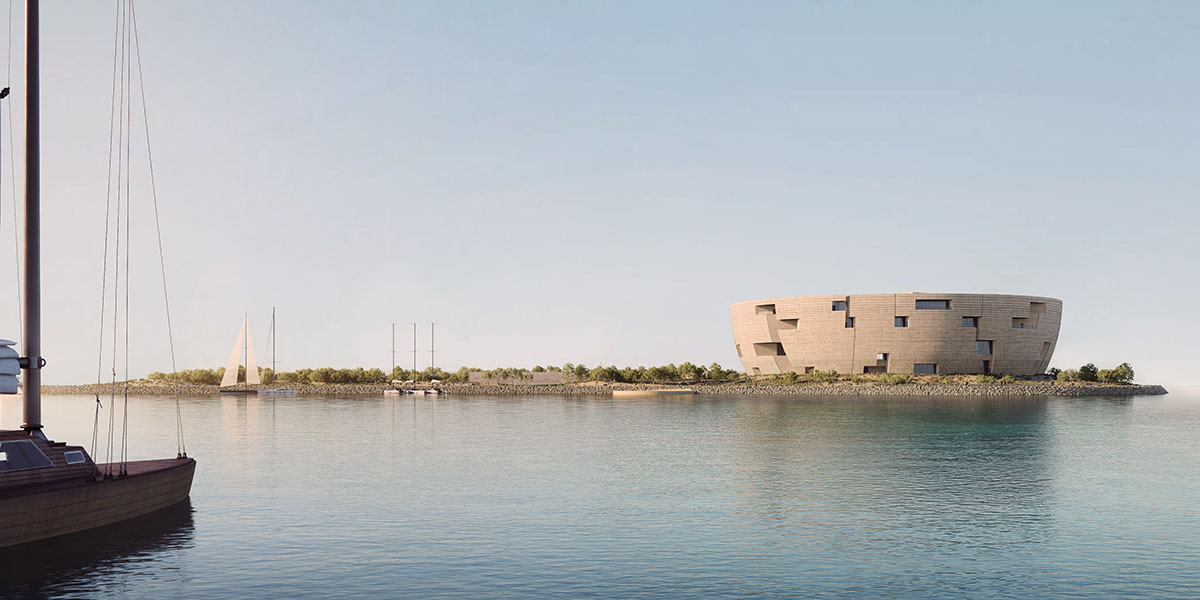www.scientificamerican.com
February 18, 202514 min readThis Backyard Bird Has a Lot to Teach Us about Sex VariabilityWhite-throated Sparrows demonstrate that traits we usually associate with sex can be influenced by genes that are not on sex chromosomesBy Donna L. Maney Joel Sartore/Photo ArkIts springtime in your backyard. You watch a pair of little brown songbirds flit about, their white throats flashing in the sun. One of the birds has striking black and white stripes on its crown and occasionally belts out its song, Old Sam Peabody, Peabody, Peabody. Its partner is more drab, with tan and gray stripes on its head and brown streaks through its white throat. Knowing the conventional wisdom about songbirdsthat the males are flashy show-offs and the females more camouflaged and quietyou decide to name the singer with bright plumage Romeo and the subtler one Juliet.But later that day you notice Juliet teed up on the fence, belting out a song. Juliets song is even louder and showier than Romeos. You wonder, Do female birds sing? Then you see Romeo bringing a twig to the pairs nest, hidden under a shrub. Your field guide says that in this species the female builds the nest by herself. What is going on?Turns out, when you named Romeo and Juliet, you made the same mistake 19th-century artist and naturalist John Audubon did when, in his watercolor of this species, he labeled the bright member of the pair male and the drab one female. Romeo might look male, even to a bird expert such as Audubon, but will build a nest and lay eggs in it. Juliet, who might look female, has testes and will defend the pairs territory by singing both alone and alongside Romeo, who also sings.On supporting science journalismIf you're enjoying this article, consider supporting our award-winning journalism by subscribing. By purchasing a subscription you are helping to ensure the future of impactful stories about the discoveries and ideas shaping our world today.Juliet and Romeo are White-throated Sparrows (Zonotrichia albicollis). At first glance, members of this species of songbird might look rather ordinary. For example, like many other songbirds, one member of each breeding pair of these sparrows has more striking plumagethat is, its appearance is what we would traditionally consider malelike for songbirds. The other bird in the pair is more femalelike, with drabber plumage.On closer inspection, White-throated Sparrows are quite remarkable. If we were to assume that the brighter bird in each breeding pair is the male, wed be right only half the time. In about 50 percent of breeding pairs of White-throated Sparrows, the brighter bird has the testes and the drabber bird has the ovaries, in keeping with the typical songbird pattern. In the rest of the breeding pairs, however, the bird with the more striking plumage is the one with the ovaries, and the duller bird has the testes.White-striped birds with ovaries behave in a way that is more masculine than we expect for female songbirds.Researchers have known since the 1960s that White-throated Sparrows occur in two color forms: a brighter white-striped morph and a plainer tan-striped morph. Even though morph has nothing to do with sexbirds of each morph are equally likely to have ovaries or testesthe birds still pay attention to morph when choosing mates. Whether male or female, tan-striped birds almost always choose white-striped mates, and vice versa. Each bird, therefore, chooses a mate from only 25 percent of the population; if you are a tan-striped female looking to make some babies, a male of the same morph just wont do. You want a male with white stripes on his head.This interesting and complex situation has earned this species the nickname the bird with four sexes. But to be clear, White-throated Sparrows do not have four different types of gonads. As in other birds, each individual typically has either two testes that produce sperm or a single ovary that produces eggs. Nevertheless, as recent research has shown, this species has much to teach us about the nature of sex variabilitythe way in which sex-related behaviors are influenced by genes, the complex structure of sex-associated chromosomes and the evolution of sexual reproduction itself. Importantly, this species challenges the practice of flattening natures wondrous diversity into two categories, male and female.I have spent the past 25 years studying this fascinating species, trying to understand how social behavior and the structure of genomes can influence each others evolution. White-throated Sparrows are a particularly good model for this line of research because the categories of sex and morph are each associated with special chromosomes. The sex chromosomes, which in birds are known as Z and W, influence whether primordial gonads develop as ovaries or testes. Birds with both the Z and the W typically develop an ovary, whereas birds with two copies of the Z develop testes. Color morph is associated with a different chromosome, chromosome number 2. Like sex chromosomes, chromosome 2 in White-throated Sparrows occurs in two versions. The first, which well call the standard version, was the first to be sequenced by scientists. The other is a rearranged version that contains a supergene, which is technically a collection of genes bound together. Whether male or female, birds with a copy of the supergene develop as white-striped; birds with only the standard chromosome develop as tan-striped.Rebecca Gelernter; Source: Multivariate Models of Animal Sex: Breaking Binaries Leads to a Better Understanding of Ecology and Evolution, by J. F. McLaughlin et al., in Integrative and Comparative Biology, Vol. 63; October 2023 (reference)Although color morphs in White-throated Sparrows are not technically sexes, the standard and supergene-bearing versions of chromosome 2 share features with the human sex chromosomes X and Y, respectively. In a typical breeding pair, one bird has two copies of the standard version, analogous to the XX genotype in humans. The other bird has one copy of the standard and one copy of the supergene, analogous to the XY genotype. Just as humans with two Y chromosomes are rare, the number of White-throated Sparrows with two copies of the supergene is vanishingly small. Almost all birds of the white-striped morph have one standard version of chromosome 2 to pass down and one version with the supergene. As a result, half the offspring of each breeding pair will inherit the supergene, and half will not.The supergene-bearing version of chromosome 2 resembles the mammalian Y chromosome in other ways. To understand the similarities, lets consider how it came to exist. Geneticist James W. Thomas, who was then at Emory University, and his laboratory demonstrated that the supergene itself is made up of several inversionslarge sections of DNA sequence that long ago flipped 180 degrees relative to the standard sequence. The rearranged region on chromosome 2 in White-throated Sparrows is so large that the two different versions cannot line up precisely beside each other and swap genes, a process known as recombination. Generally speaking, mismatched sequences arent a big problem, so long as there is another copy of the same version of the chromosome nearby to line up and swap genes with. But for the supergene version of chromosome 2, there usually isnt one. As is the case for the mammalian Y chromosome, individuals with the supergene chromosome typically have only one copy of it. So, whereas in the tan-striped birds the two copies of the standard version of chromosome 2 can recombine freely with each other, in white-striped birds the supergene version of the chromosome stands alone, unable to recombine with a partner.This isolation has caused the gene sequences inside the supergene to slowly diverge from the corresponding sequence on the standard version, becoming less and less similar to it over time. Escaping recombination also causes the genes inside the supergene to become locked together, meaning that each white-striped bird inherits a large block of increasingly differentiated genes. For these sparrows, those differentiated genes translate to differences in plumage and behavior.The evolutionary changes taking place in chromosome 2 in White-throated Sparrows loosely recapitulate a classical theory of the evolution of sex chromosomes. In the case of the X and Y chromosomes in mammals, suppression of recombination has been hypothesized to cause progressive loss of gene function and even the loss of entire genes. Over time the Y chromosome has degenerated such that it shares only a handful of genes with the X. The same scenario has played out for sex chromosomes in a wide variety of species, including other mammals, birds and many insects: a chromosome associated with either testicular or ovarian development has stopped recombining with its former partner and has differentiated substantially. The supergene-bearing chromosome 2 in White-throated Sparrows seems to be in the same situation. To investigate these parallels more closely, we worked with researchers at the Georgia Institute of Technology, led by Soojin V. Yi. Our study revealed that the supergene shows only minimal signs of degeneration. Thus, although the chromosome with the supergene may be recapitulating the evolution of a sex-chromosome-like system in many ways, we dont see obvious evidence that it will end up small, like the Y, anytime soon.In White-throated Sparrows, both white-striped birds (bottom) and the drab tan-striped birds (top) sing.Glenn Bartley/Minden Pictures (top); Scott Leslie/Minden Pictures (bottom)The White-throated Sparrows chromosome 2 also resembles the mammalian XY chromosome system with respect to its consequences for behavior. Birds with the supergene versionthat is, the white-striped birdsdefend their breeding territories more vigorously on average than do their tan-striped counterparts, who spend more of their time bringing food to offspring in the nest. In other words, behaviors we expect to be associated with the Y chromosome in mammalsnamely, prioritizing territorial aggression over parentalThis dissociation makes this species especially valuable for understanding the evolution of sex-related traits and the extent to which any individual can be said to be one sex versus another. In White-throated Sparrows, we see masculine and feminine traits distributing themselves in a manner clearly orthogonal to gonadal sex. White-striped birds with ovaries behave in a way that is more masculine than we expect for female songbirds, and tan-striped birds with testes look and behave in a relatively feminine way. Because the behavioral differences between the morphs can be attributed to a genetic sequence not associated with sex or sex chromosomes, the supergene provides an important tool with which to identify gene variants that nudge a sparrow in one behavioral direction or another no matter what gonads it has.Twentieth-century geneticist Theodosius Dobzhansky, who once said, Nothing in biology makes sense except in light of evolution, speculated that inversions are adaptive because they capture and bind together gene variants that confer a collective benefit when inherited together. The inversions that make up the White-throated Sparrow supergene have captured about 1,000 genes that are slowly differentiating from the standard versionscertainly a rich source of possibilities for co-adaptation.In my laboratory at Emory, we went on the hunt for gene variants inside the supergene that shift the behavior of the white- and tan-striped sparrows in masculine and feminine directions, respectively. We knew that circulating levels of steroid hormonesnamely, testosterone in males and estradiol in femalesare higher in white-striped than tan-striped birds. This morph difference in hormone levels does not, however, explain the differences in their behavior. When we experimentally equalized levels of steroid hormones between the morphs, the white-striped birds were still more aggressive, despite having levels of steroid hormones identical to those of the tan-striped birds. Perhaps the white-striped birds are simply more sensitive to their own circulating steroids. If so, we wondered, what is the biology underlying that sensitivity?To answer that question, Brent M. Horton and I led a team to take a neuroscience approach. We reasoned that increased sensitivity to steroid hormones in white-striped birds might come from higher levels of the receptors for those hormones in their brains. Sure enough, in a part of the brain associated with reproductive behaviors, white-striped birds have extraordinarily high activity of a gene encoding a steroid-hormone receptor important for territorial aggression. This gene, called ESR1, is located inside the region of chromosome 2 that corresponds to the location of the inversions. Over evolutionary time the variant of ESR1 inside the supergene has diverged genetically from its counterpart on the standard chromosome. This genetic divergence has revved up the activity of the supergene variant such that white-striped birds have higher levels in this brain region than do tan-striped birds. Moreover, the more active the supergene variant of ESR1 relative to the standard version, the more aggressive the bird. We had our smoking gun.To show definitively that this receptor plays a causal role in white-striped aggression, Jennifer R. Merritt, then a graduate fellow at Emory,ESR1 gene. We hypothesized that if white-striped birds were more aggressive because of higher levels of the hormone receptor, then the morph difference in aggression should disappear if we experimentally reduced production of the receptor in those birds down to the tan-striped level in the brain region in question. Just as we predicted, white-striped birds with reduced receptor levels showed no more aggression than tan-striped birds. In other words, we were able to change their behavior from white-striped to tan-striped by altering the activity of a single gene.As exciting as that finding was, we were under no illusion that the aggressive behavior of the white-striped morph can be explained by just one gene. We believe, as Dobzhansky would have, that the behavior is influenced by multiple, co-adapted genes inside the supergene. Our analysis of all the genes inside the supergene, spearheaded by Emory researcher Wendy M. Zinzow-Kramer, showed that ESR1 is part of a large network of genes inside the supergene that predict territorial aggression. Perhaps these genes act together somehow to alter both plumage and behavior.White-throated Sparrows help us see past the sex binary by forcing us to acknowledge sources of variability other than sex.Armed with the knowledge that the neighbors of influential genes can have related functions, we directed our attention to a gene that is practically adjacent to ESR1 inside the supergene. This gene, known as VIP, is active widely in the brain and influences a variety of social behaviors across vertebrates. In songbirds, it promotes aggression when activated in one part of the brain and parental behavior in another. Because these behaviors are the ones that differ between the morphs in White-throated Sparrows, this gene was a prime candidate for further investigation.Horton and his team showed that in the brain region where VIP is associated with aggression, activity of the VIP gene is higher in the white-striped morph. In the brain region associated with parenting, its activity is higher in the tan-striped morph. Because white-striped birds are more aggressive and tan-striped more parental, this finding strongly suggested a role for VIP in the behavioral differences. But how can the same gene variant be revved up in one brain region and ramped down in another?A group led by Mackenzie R. Prichard, then a graduate fellow at Emory, provided an important clue. The VIP variant inside the supergene differs from the standard version not only genetically but also in another important way. DNA can be tagged with chemical markers that are not part of the gene sequencethey attach to it epigenetically, which can silence the gene. In the brain region where VIP promotes aggression, these tags are significantly reduced on the supergene variant of VIP. Although we do not totally understand the mechanisms that regulate the tags, their removal from the supergene probably allows the peptide that VIP encodes to be produced at higher levels in this brain region in the white-striped birds. The situation looks different in the brain region associated with parenting, where the relative activity of the supergene variant of VIP is significantly lower.The 19th-century artist and naturalist John Audubon mistakenly assumed that the whitestriped variants of the White-throated Sparrow were all males and the tan-striped birds were all females.Fine art images/Heritage Images via Getty ImagesThese findings are exciting because they show that production of the VIP peptide is regulated differently in each of these two brain regions in ways that are adaptive for each morph. In the brain region where VIP promotes aggression, the brakes have come off the supergene version of the gene. The resulting higher activity may allow the white-striped birds to produce more VIP peptide where it is needed for aggression. In the region where VIP promotes parental behavior, the brakes are applied a bit more to the supergene, which may reduce VIP production in this region in white-striped birds and make them less parental.Is it significant that the two supergene variants of ESR1 and VIP are so close to each other inside the supergene? Are they co-adapted at the molecular level? We dont yet know. Even if the gene products dont interact directly, both contribute toward the same aggressive, white-striped phenotype. Dobzhansky might argue that this shared function alone makes their linkage adaptive. Over evolutionary time the supergene is likely to accumulate even more gene variants and epigenetic tags that complement an aggressive phenotype, in keeping with the theory behind the evolution of chromosomes associated with sexes.White-throated Sparrows demonstrate that traits we usually associate with sex can be influenced by genes that are not on sex chromosomes. In this species, some of those genes are linked to one another and to an obvious, sex-adjacent phenotype, making these associations easy to study. But the dissociation of sex-related genes from sex chromosomes isnt at all exceptional. In all sexually reproducing species, including humans, most genes that contribute to sex-related variation are not known to be linked to any particular genomic architecture. Even genes involved in gonadal development and hormone synthesis can be found on most any chromosome, mapping to locations throughout the genome that freely recombine. Each individual inherits a new combination of genetic and epigenetic material, resulting in diversity that defies binary categories.In most sexually reproducing species, making an embryo requires two gametes: one egg and one sperm. That binary is clear. But the egg-sperm binary does not apply to the eventual development of that embryo into a sexed body with sex-related behaviors. That development is conceptually separate and decidedly nonbinary in many ways. To understand why, lets consider the theoretical evolutionary function of sexual reproduction.Biologists have long argued that the genetic function of sexnamely, the mixing of genomes in the generation of offspringis to create combinations of genes that could confer advantages in an unpredictable future environment. Sexual reproduction hurries the new combinations along, meaning the advantageous combinations become established much faster than if we simply cloned ourselves and waited for genes to randomly mutate into more beneficial forms. In other words, the entire point of having sexes is to generate diversity. Each new organism possesses a genome never seen before, unlike either parents.For reasons that so far remain mysterious to scientists, the most diverseUntil recently, species such as sex-changing fish, all-female lizards and White-throated Sparrows with their four sexes were regarded as curiositiesoddball organisms that seemed to break the rules. But that view is rapidly changing. New tools for studying the processes underlying sexual development call the rules themselves into question. We are learning that the molecular pathways that guide a body to develop ovaries, testes, or other sex-related features are evolutionarily unstable and precarious. The genes and proteins that contribute to making a gonad are not the same across species, even closely related ones. These pathways are not well conserved, suggesting they remain flexible for good reason.The development of sex-related traits is astonishingly diverse not only across species but within them. Every individual, sparrow or human, has masculine and feminine characteristics. That diversity is obscured when we lump individuals into two categories and consider each as a homogeneous group. When we compare the categories female and male, we often report a sex differencea binary outcome made inevitable by a binary approach. This approach fails to acknowledge the profound overlap between sexes on almost any measure.White-throated Sparrows help us see past the sex binary by forcing us to acknowledge sources of variability other than sex, which is, in reality, only a small contributor to variability for many species. Diversity and plasticity of phenotypic expression is the norm, particularly for traits that correlate with sex. Sex-related traits are simply not hardwired. Evolutionary biologists believe that this plasticitylike the dazzling diversity of sex-determining molecular pathwaysmay be adaptive in changing environments. Individuals retaining maximal flexibility in the expression of sex-related traits are better able to adapt quickly to changing environments or, in some cases, may even be able to change their sex.Sexual reproduction, by its very nature, generates diversity. The different pathways by which bodies develop as male, female, both or neither are perhaps as numerous as species themselves. Genomes are fluid, constantly changing and evolving. Gene sequences link together and separate in a never-ending dance. The environment also changes constantly, guiding development in unpredictable and sometimes disruptive ways. Every newly evolved avenue to develop into a sexed body begins a new, generative process that gives rise to still newer routes. Viewed this way, it is clear that sexual diversity within species is an evolutionary adaptationa feature, not a bug. Like our backyard sparrows Romeo and Juliet, each of us is expressing our own unique phenotype just as nature intended.












